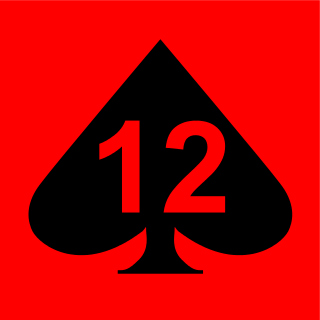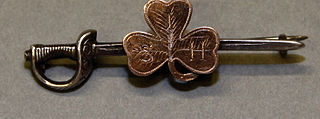 |
| British Army lists |
|---|
| French Revolutionary and Napoleonic Wars |
| Victorian-era |
| First World War |
| Second World War |
| Regiments |
| Officers |
| Other |
This is a list of all British formations mobilised to serve in the Second Boer War
 |
| British Army lists |
|---|
| French Revolutionary and Napoleonic Wars |
| Victorian-era |
| First World War |
| Second World War |
| Regiments |
| Officers |
| Other |
This is a list of all British formations mobilised to serve in the Second Boer War
| Formation name | Created | Ceased to exist | Locations served | Notes | Ref |
|---|---|---|---|---|---|
| First Army Corps |
| Formation name | Created | Ceased to exist | Locations served | Notes | Ref |
|---|---|---|---|---|---|
| 1st Division | |||||
| 2nd Division | |||||
| 3rd Division | |||||
| 4th Division | March 1900 | October 1900 | Natal, Transvaal | Formed from garrison of Ladysmith after Siege | [1] |
| 5th Division | November 1899 | October 1900 | Natal, Transvaal | [2] | |
| 6th Division | |||||
| 7th Division | |||||
| 8th Division | |||||
| 9th Division | |||||
| 10th Division | |||||
| 11th Division | |||||
| Colonial Division | |||||
| Cavalry Division | |||||
| 1st Mounted Division | |||||
| 2nd Mounted Division | |||||
| 3rd Mounted Division | |||||
| 4th Mounted Division | |||||
| 5th Mounted Division |
| Formation name | Created | Ceased to exist | Locations served | Notes | Ref |
|---|---|---|---|---|---|
| 1st (Guards) Brigade | Existing brigade at Aldershot | [3] [4] | |||
| 2nd Brigade | Existing brigade at Aldershot | [3] [4] | |||
| 3rd (Highland) Brigade | Existing brigade at Aldershot | [3] [4] | |||
| 4th (Light) Brigade | Existing brigade | [3] | |||
| 5th (Irish) Brigade | Existing brigade | [3] | |||
| 6th (Fusilier) Brigade | Existing brigade | [3] | |||
| 7th Brigade | March 1900 | October 1900 | Natal, Transvaal | Formed in the garrison of Ladysmith | [1] |
| 8th Brigade | March 1900 | October 1900 | Natal, Transvaal | Formed in the garrison of Ladysmith | [1] |
| 9th Brigade | November 1899 | Formed from troops already in Cape Colony | |||
| 10th (Fusilier) Brigade | November 1899 | [2] | |||
| 11th (Lancashire) Brigade | November 1899 | [2] | |||
| 12th Brigade | |||||
| 13th Brigade | |||||
| 14th Brigade | |||||
| 15th Brigade | |||||
| 16th Brigade | |||||
| 16th Brigade | |||||
| 17th Brigade | |||||
| 18th Brigade | |||||
| 19th Brigade | |||||
| 20th Brigade | |||||
| 21st Brigade | |||||
| 22nd Brigade | |||||
| 23rd Brigade |

Leopold Charles Maurice Stennett Amery, also known as L. S. Amery, was a British Conservative politician and journalist. During his career, he was known for his interest in military preparedness, British India and the British Empire and for his opposition to appeasement. After his retirement and death, he was perhaps best known for the remarks he made in the House of Commons on 7 May 1940 during the Norway Debate.

The 4th Infantry Division was a regular infantry division of the British Army with a very long history, seeing active service in the Peninsular War and Waterloo Campaign, the Crimean and Boer Wars and both World Wars. It was disbanded after the Second World War and reformed in the 1950s as an armoured formation before being disbanded and reformed again and finally disbanded on 1 January 2012.

Alfred Milner, 1st Viscount Milner, was a British statesman and colonial administrator who played a very important role in the formulation of British foreign and domestic policy between the mid-1890s and early 1920s. From December 1916 to November 1918, he was one of the most important members of Prime Minister David Lloyd George's War Cabinet.
The Norway Debate, sometimes called the Narvik Debate, was a momentous debate in the British House of Commons from 7 to 9 May 1940, during the Second World War. The official title of the debate, as held in the Hansard parliamentary archive, is Conduct of the War. The debate was initiated by an adjournment motion enabling the Commons to freely discuss the progress of the Norwegian campaign. The debate quickly brought to a head widespread dissatisfaction with the conduct of the war by Neville Chamberlain's government.

Harold Julian Amery, Baron Amery of Lustleigh, was a British Conservative Party politician, who served as a Member of Parliament (MP) for 39 of the 42 years between 1950 and 1992. He was appointed to the Privy Council in 1960.

The Battle of Berg-en-dal took place in South Africa during the Second Anglo-Boer War.
The 14th Infantry Brigade was a British Army formation during the Second Boer War, World War I, when it served on the Western Front, and World War II, when it fought in Crete and Tobruk, and then as Chindits in Burma.

The 11th Security Force Assistance Brigade is a brigade of the British Army which is intended to train and assist foreign forces. In 2021, under the Future Army changes, the brigade was redesignated, formerly being the 11th Infantry Brigade & HQ South East. Prior to the Army 2020 changes in 2013, the brigade was temporarily activated for deployment to Afghanistan. Originally formed in the Second Boer War, the brigade was engaged during both World Wars.

The Zoologist was a monthly natural history magazine established in 1843 by Edward Newman and published in London. Newman acted as editor-in-chief until his death in 1876, when he was succeeded, first by James Edmund Harting (1876–1896), and later by William Lucas Distant (1897–1916).

The 12th Armoured Brigade Combat Team, formerly the 12th Armoured Infantry Brigade, is a regular brigade of the British Army which has been in almost continuous existence since 1899 and now forms part of 3rd Division.
The 10th Infantry Brigade was a Regular Army infantry brigade of the British Army formed during the Second Boer War in 5th Division, and during both World Wars the brigade was part of the 4th Infantry Division.

The South Irish Horse was a Special Reserve cavalry regiment of the British Army. Formed as an Imperial Yeomanry regiment in 1902 as the South of Ireland Imperial Yeomanry, it perpetuated a unit formed during the Second Boer War. It transferred to the Special Reserve (Cavalry) in 1908 and was renamed as the South Irish Horse. Having taken part in the fighting of World War I, it was disbanded after Irish Independence in 1922.

XII (Howitzer) Brigade was a unit of Britain's Royal Field Artillery from 1900 until 1920, seeing service during the Second Boer War as mounted infantry. In World War I it served with 6th Divisional Artillery on the Aisne and during the Race to the Sea, later in the Ypres Salient. In 1916 it was broken up and reformed as a field gun brigade in home defence. Demobilised after the Armistice, it was quickly reformed, but was absorbed into another brigade in 1920.
The 19th Battalion was a unit of the Imperial Yeomanry raised by George Paget as auxiliaries to the British Army during the Second Boer War. The men were mainly upper middle class and recruited from the gentlemen's clubs of London. The unit saw action at Faber's Put, Elands River, Lichtenburg, and numerous engagements on the lines of communication. The battalion was disbanded after the war.
20th Brigade was an infantry formation of the British Army first organised in the Second Boer War. In the First World War, the brigade fought on the Western Front and on the Italian Front as part of 7th Division. The brigade was re-raised under during the Second World War and briefly served in France until being converted to an armoured formation.
The East Kent Militia, later the 3rd Battalion, Buffs was an auxiliary regiment raised in Kent in South East England. From its formal creation in 1760 the regiment served in home and colonial defence in all of Britain's major wars until 1918, seeing active service in the Second Boer War and supplying thousands of reinforcements to the Buffs during World War I.

The Royal Artillery Mounted Rifles were detachments of the British Army's Royal Artillery when deployed as mounted infantry. The units were first developed towards the end of the Second Boer War which was characterised by guerrilla warfare. There was little call for traditional units of field or horse artillery but high demand for mounted infantrymen to counter the highly mobile Boer commandos. By the end of the war around 2,000 artillerymen were acting in the mounted infantry role. A similar force was deployed to Ireland in the early 1920s to counter guerrilla tactics used by Irish republicans.
The Queen's Edinburgh Light Infantry Militia was an auxiliary regiment raised in and around the city of Edinburgh in Scotland. It was formed in 1798 and reformed in 1802, but had links with earlier Fencible and Volunteer units from the area. It served in home defence during the Napoleonic Wars and the Crimean War. Later it became a battalion of the Royal Scots and saw active service in South Africa during the Second Boer War. It served as a Special Reserve training unit in World War I, but after 1921 the militia had only a shadowy existence until its final abolition in 1953.

42nd (Hertfordshire) Company was a unit of the Imperial Yeomanry formed to supplement the British Army in the Second Boer War. Raised by the part-time Hertfordshire Yeomanry and largely drawn from its ranks, the company was engaged at the Rhenoster River, in the Brandwater Basin, and in various small engagements round Krugersdorp. It was replaced by a new 42nd Company in 1901.
The 9th (Welsh) Battalion, Imperial Yeomanry was a unit of the British Imperial Yeomanry (IY) raised for service in the Second Boer War. Equipped as Mounted infantry, the battalion served in South Africa from April 1900 until the end of the war. Its companies took part in numerous anti-guerrilla 'drives' with mobile columns that eventually brought the war to an end.